Master Data Management (MDM) software is a type of enterprise software designed to create, maintain, and manage a central repository of key business data. This central repository is often referred to as the “master data” and includes critical information about entities like customers, products, suppliers, and other key business elements.

Here are some of the core functions and benefits of MDM software:
- Data Consolidation: MDM software consolidates data from various sources, ensuring that there is a single, accurate view of key entities across the organization.
- Data Quality Management: It helps in improving data quality by providing tools for data cleansing, validation, and enrichment, which ensures that the master data is accurate, complete, and up-to-date.
- Data Governance: MDM software supports data governance by defining and enforcing policies for data management, which helps in maintaining data consistency and compliance.
- Data Integration: It integrates data from different systems, databases, and applications, creating a unified view of the master data that can be used across various business processes.
- Data Hierarchy Management: MDM systems often manage hierarchical relationships within data, such as the relationship between a parent company and its subsidiaries, or between a product and its variants.
- Reporting and Analytics: By providing a single source of truth, MDM software enhances reporting and analytics capabilities, enabling more informed decision-making based on accurate and consistent data.
- Data Stewardship: It often includes tools for data stewardship, allowing users to manage and oversee data quality and integrity on an ongoing basis.
- Enhanced Collaboration: With a unified view of master data, different departments and teams can collaborate more effectively, reducing discrepancies and improving overall business efficiency.
MDM software is crucial for organizations that need to manage large volumes of data across multiple systems and ensure that their key business information is accurate, consistent, and accessible.
Informatica
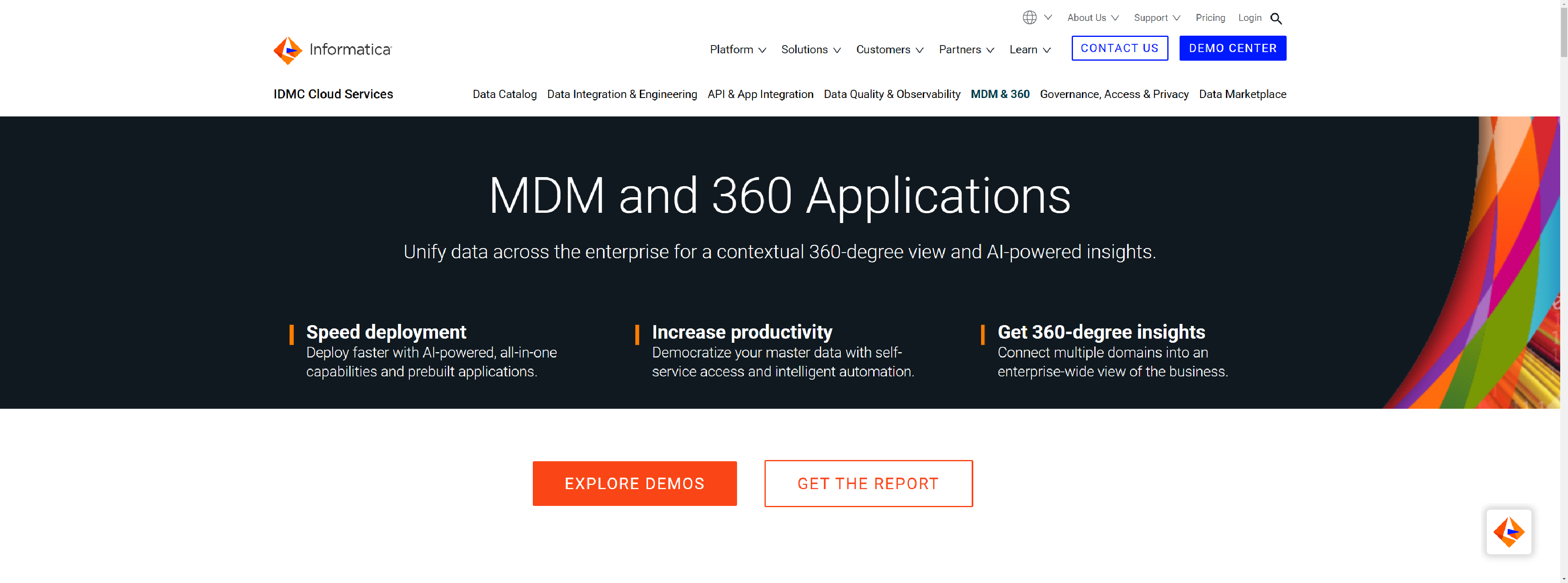
Informatica – informatica is an Enterprise Cloud Data Management leader that brings data to life by empowering businesses to realize the transformative power of their most critical assets.
- Comprehensive capabilities
- Modern user experience
- Broad connectivity
- AI-driven match and merge
- Single version of the truth
Ibm
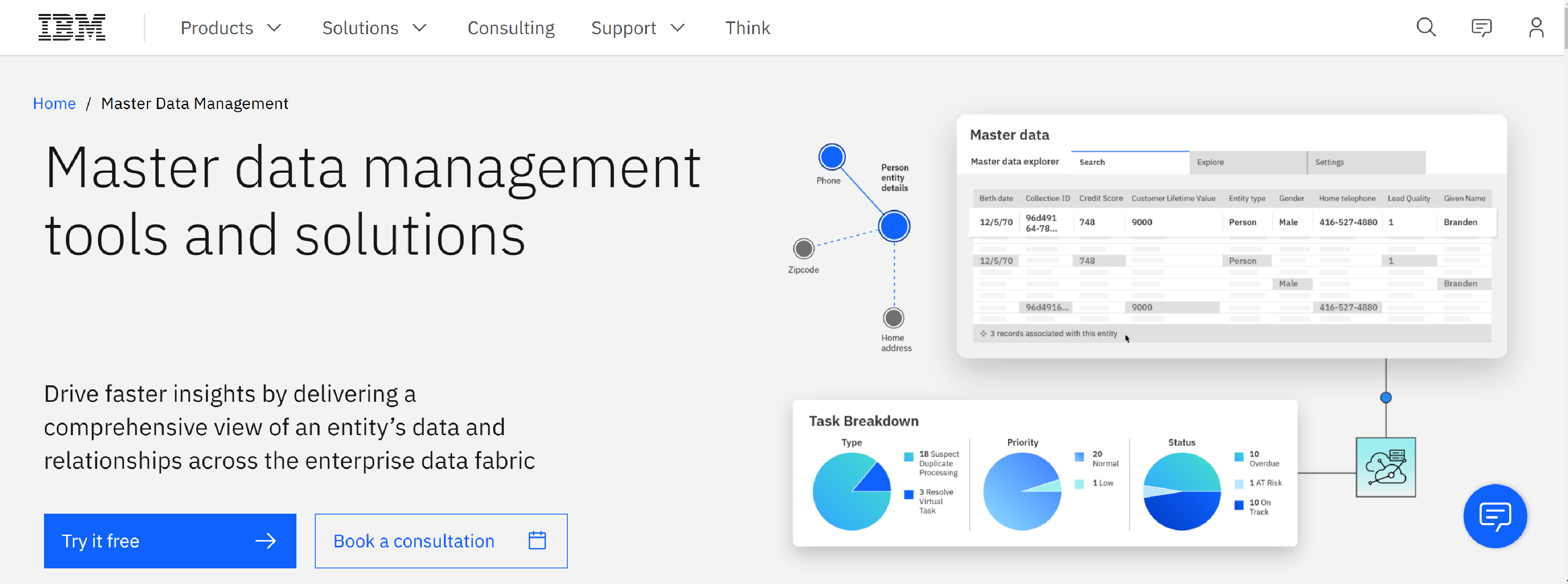
Ibm – master data management helps you gain insights into volumes of data about your products, services, customers and transactions through self-service analytics.
- Enable your teams to have quick access to the critical data they need across customers, products, organizations, households and more
- Get the right data to your users and reduce time-to-market with robust pre-built data models
- Reduce administrative burden and improve matching accuracy using built-in machine learning algorithms
Syndigo
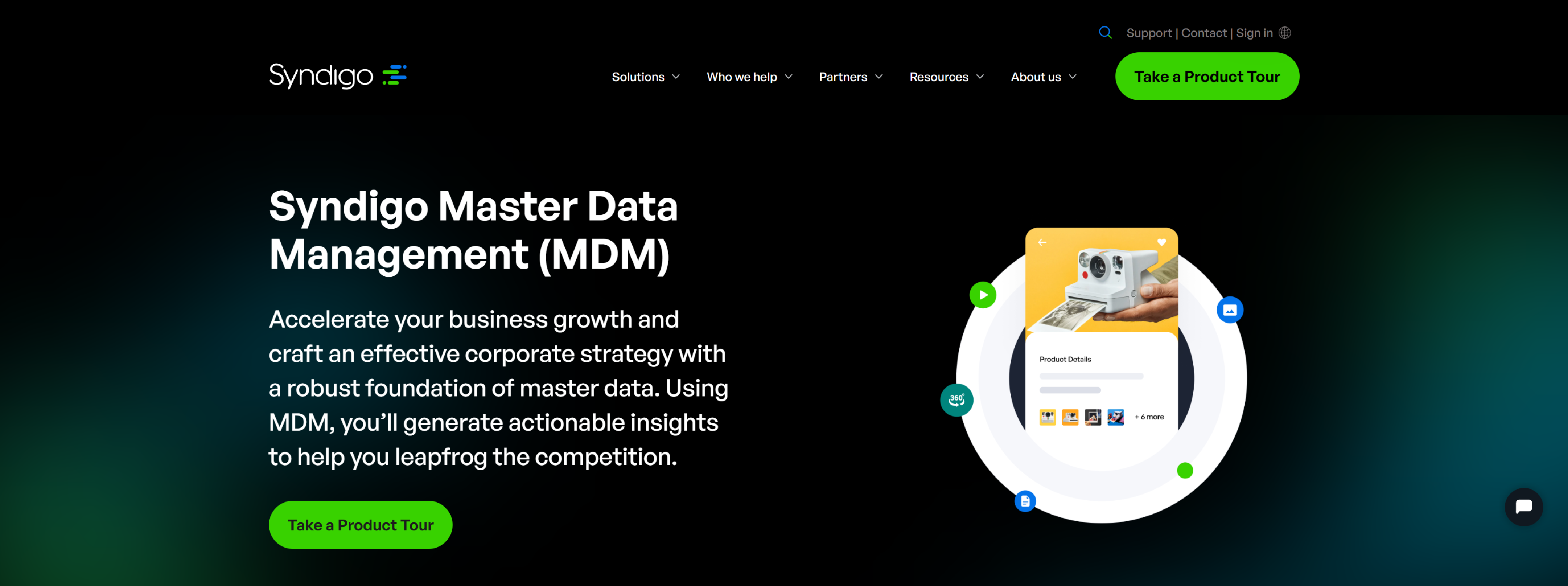
Syndigo MDM consolidates, cleans, and governs master data assets across various systems and sources to ensure consistency and accuracy.
- App Marketplace: Unlimited growth
- Golden Core MDM: AI-powered platform
- Multi-domain MDM: Next-gen architecture
- Integration Hub: Seamless connectivity
- Intelligence Hub: Automation and insights
Sphera
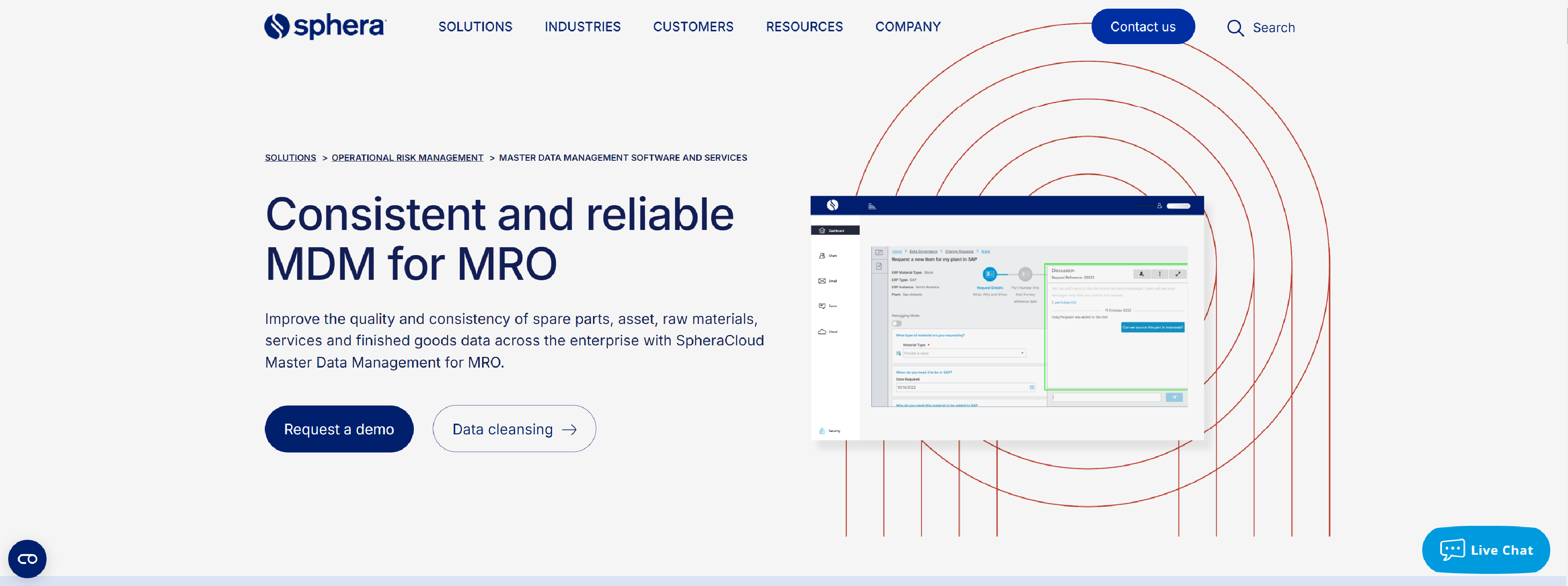
Sphera – productivity gains come when you have accurate, consistent and comprehensive MRO, materials, services, products and finished goods data.
- MRO “White Glove” Data Cleansing Service
- Unify and optimize MRO spare parts data across the enterprise
- Ensure efficient data governance
- Find and compare information quickly
- Improve supply chain, inventory and operational excellence
Semarchy
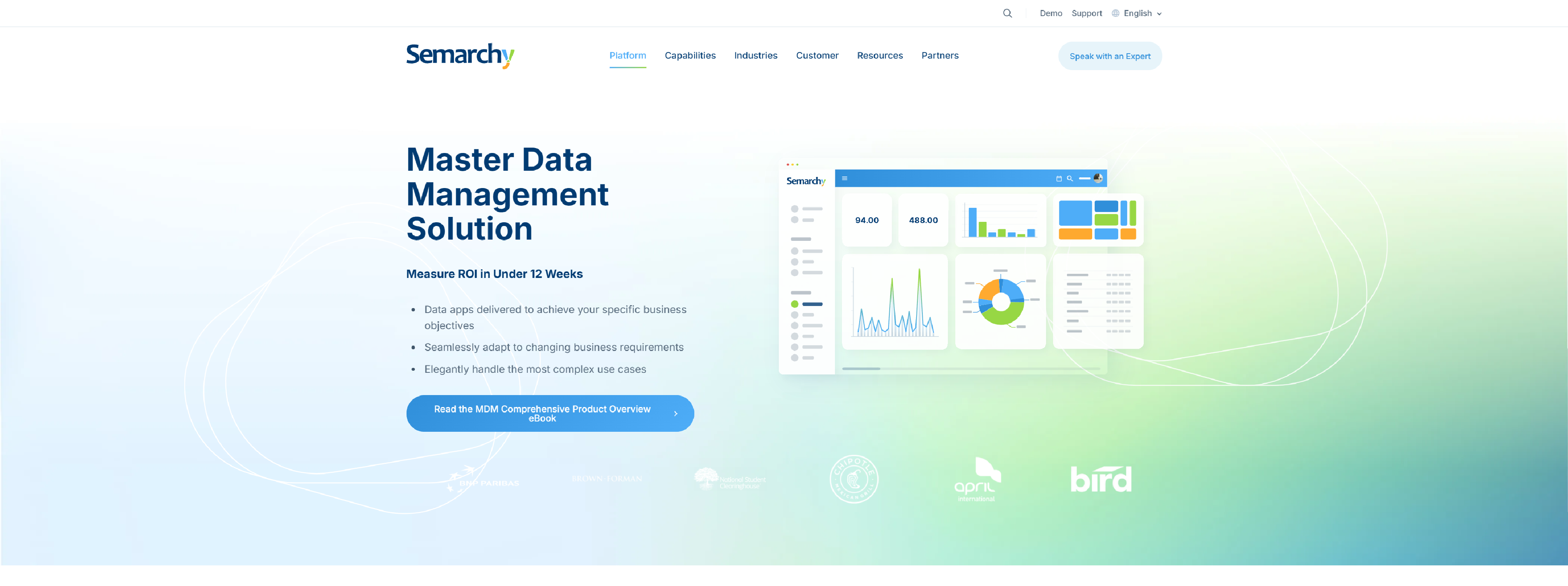
Semarchy is once again a 2022 Customers’ Choice for Master Data Management based on peer-sourced reviews and ratings from Gartner Peer Insights.
- Customer success experts dedicated to your success
- Kickstarter models to help you envision and accelerate
- Rapid delivery blueprints step-by-step guides
- Portfolio of implementation partners including Global and Regional partners
Reltio
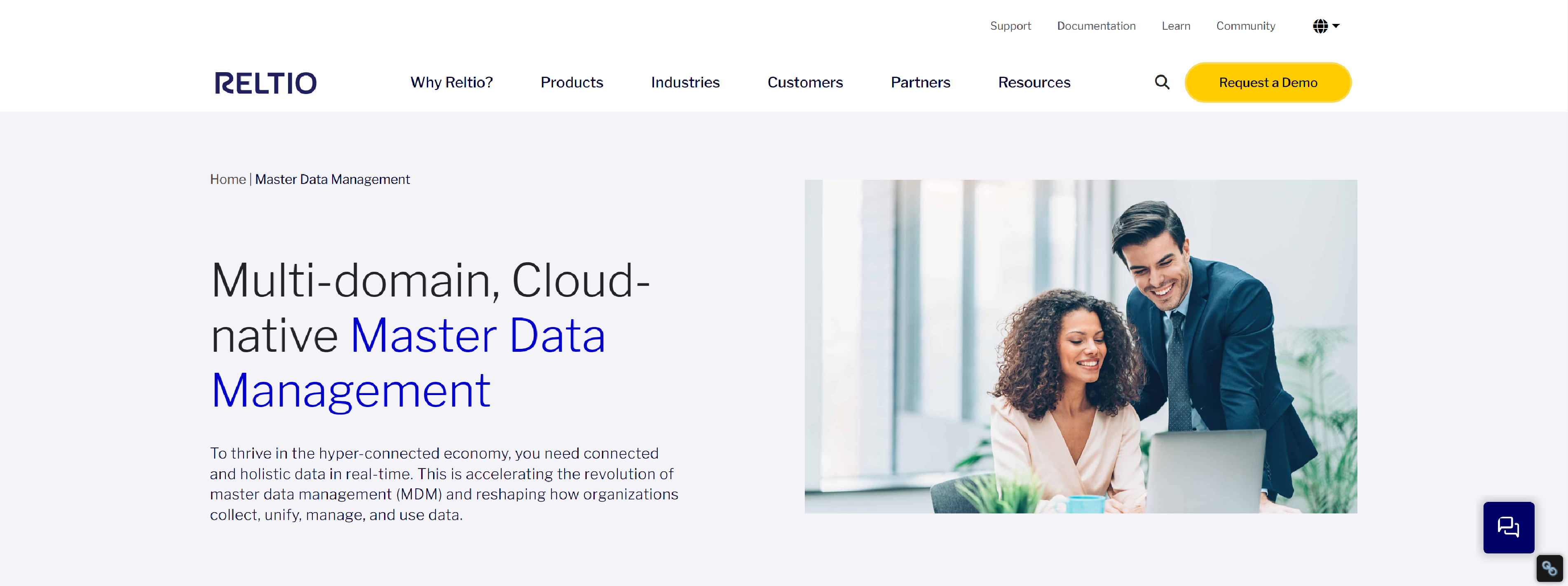
Reltio – Connected Data Platform – the industry’s first cloud-native, SaaS master data management solution (MDM) – unifies and cleanses multi-source, complex data into a single source of trusted information. You get insight-ready, real-time data at scale.
- Truly Multi-domain MDM Capabilities
- Comprehensive Profiles
- Modern Architecture with Connected Graph
- Machine Learning-based Matching
- Data Quality Confidence Indicators
- History & Lineage
Syniti
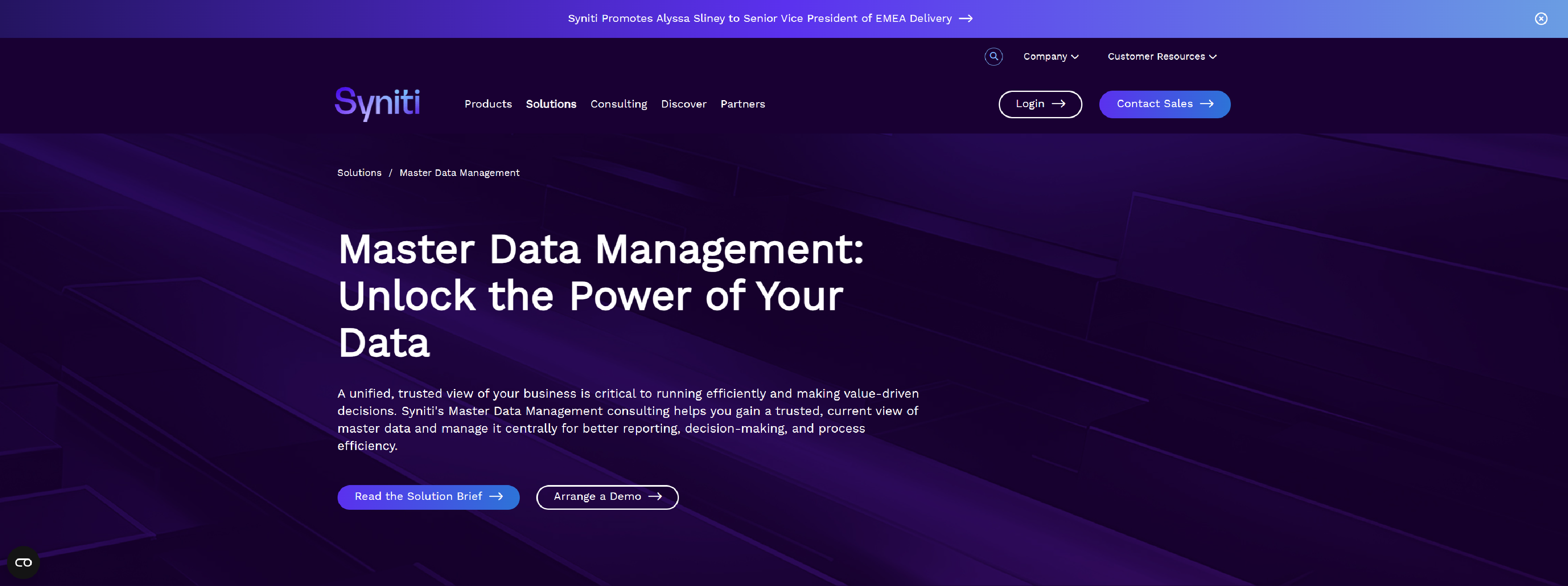
Syniti’s Master Data Management consulting helps you gain a trusted, current view of master data and manage it centrally for better reporting, decision-making, and process efficiency.
- Customize to your use case
- Tap into reliable insights
- Remove costly silos, and time sucks
- Centralized teamwork
- Effective knowledge re-use
Tableau
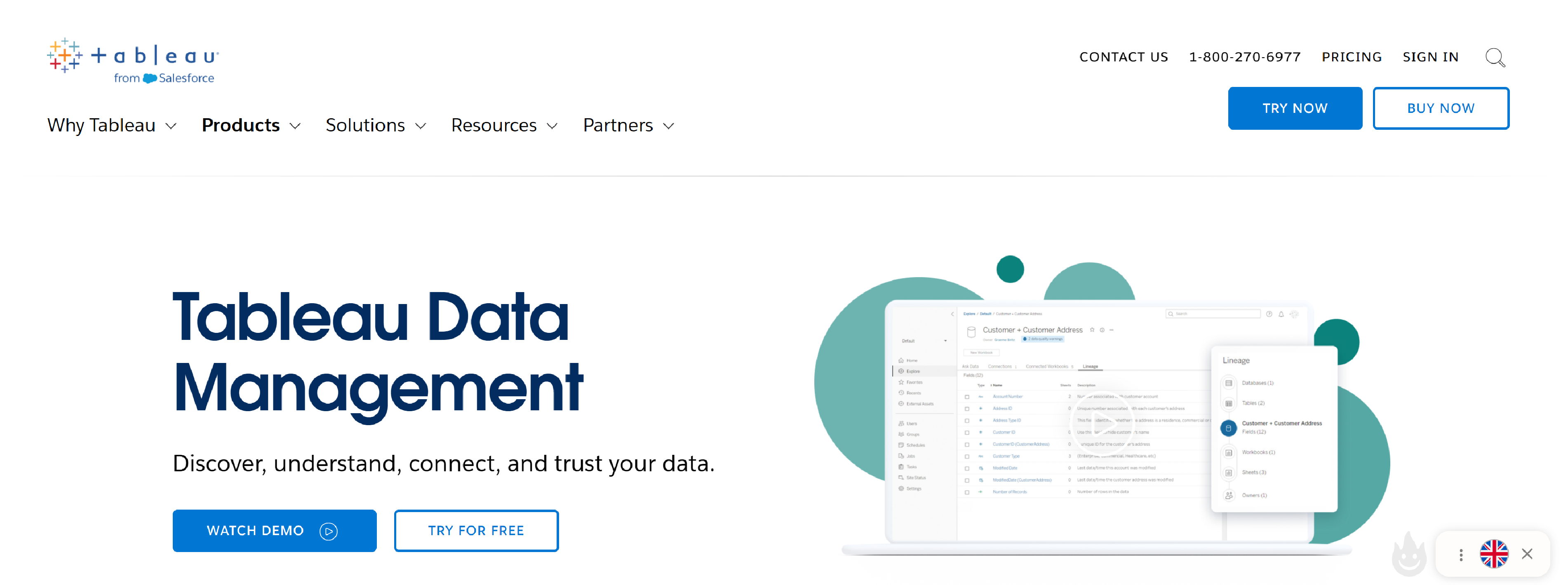
Tableau Data Management unlocks enterprise capabilities via Tableau Catalog, Tableau Prep Conductor, and unique governance and security features.
- Simplify data connectivity
- Reimagine data governance
- Streamline data prep
Winpure
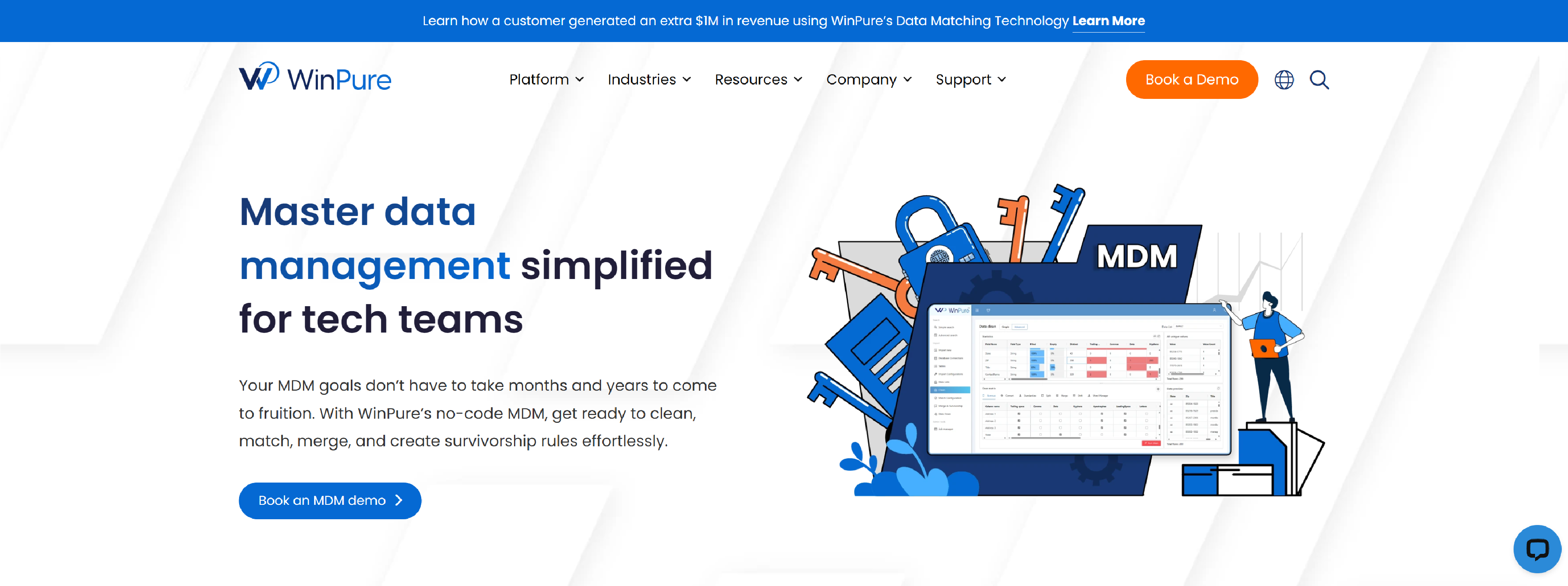
Centralize and optimize your data with WinPure Master Data Management Software. Improve data quality, consistency, and governance for better decision-making.
- Remote data operations
- Data prep
- Google-like search
- Main DB & 3rd-party connectivity
- Automation and approval
Most Common Questions Regarding Enterprise Monitoring Software
Q: What exactly is considered “master data”?
A: Master data refers to the core entities that are essential for business operations and analytics. This typically includes information about customers, products, suppliers, employees, and locations. Unlike transactional data, which changes frequently, master data remains relatively stable but is critical for business processes.
Q: Why should organizations invest in Master Data Management?
A: Investing in MDM is crucial because it ensures data accuracy, consistency, and reliability across the organization. This leads to better decision-making, enhanced operational efficiency, and improved customer satisfaction. MDM helps prevent issues like duplicate records, inconsistencies, and errors that can arise from disparate data sources.
Q: What are the primary components or features of an MDM system?
A: Key components of an MDM system typically include:
- Data Integration: Tools for merging data from various sources.
- Data Quality Management: Functions for cleansing, validating, and enriching data.
- Data Governance: Policies and procedures for managing data integrity and compliance.
- Master Data Repository: A central database where master data is stored.
- Data Stewardship: Tools for managing and overseeing data quality.
- Data Modeling: Frameworks for defining data relationships and hierarchies.
Q: How does MDM contribute to better data quality?
A: MDM improves data quality by consolidating data from multiple sources into a single, accurate repository. It applies data cleansing and validation processes to correct errors, remove duplicates, and ensure completeness. Regular data governance and stewardship activities further maintain and enhance data quality over time.
Q: What are some common challenges organizations face when implementing MDM?
A: Common challenges include:
- Data Integration Issues: Combining data from disparate sources can be complex.
- Data Quality Problems: Initial data may be inconsistent or incomplete.
- Change Management: Adapting to new processes and systems can be difficult for staff.
- Scalability: Ensuring the MDM system can grow with the organization’s needs.
- Governance and Compliance: Establishing and enforcing data governance policies can be challenging.
Q: How does MDM software interact with other enterprise systems?
A: MDM software integrates with other systems through APIs, data connectors, and middleware. It pulls data from various sources, such as CRM, ERP, and financial systems, and synchronizes this data into the master repository. It can also push updates back to source systems to ensure consistency across all platforms.
Q: What metrics or indicators are used to measure the success of MDM implementation?
A: Success can be measured by:
- Data Quality Improvements: Reduced errors, duplicates, and inconsistencies.
- Operational Efficiency: Streamlined processes and reduced manual data handling.
- User Adoption: High engagement and satisfaction from users interacting with the MDM system.
- Decision-Making: Improved decision-making capabilities based on accurate data.
- Compliance: Enhanced ability to comply with regulatory requirements.
Q: Which roles within an organization benefit from using MDM software?
A: Key roles that benefit from MDM include:
- Data Stewards: Responsible for maintaining data quality and governance.
- IT Managers: Oversee the technical implementation and integration of MDM systems.
- Business Analysts: Use accurate master data for reporting and analysis.
- Compliance Officers: Ensure data management practices meet regulatory requirements.
- Executives: Rely on accurate data for strategic decision-making.